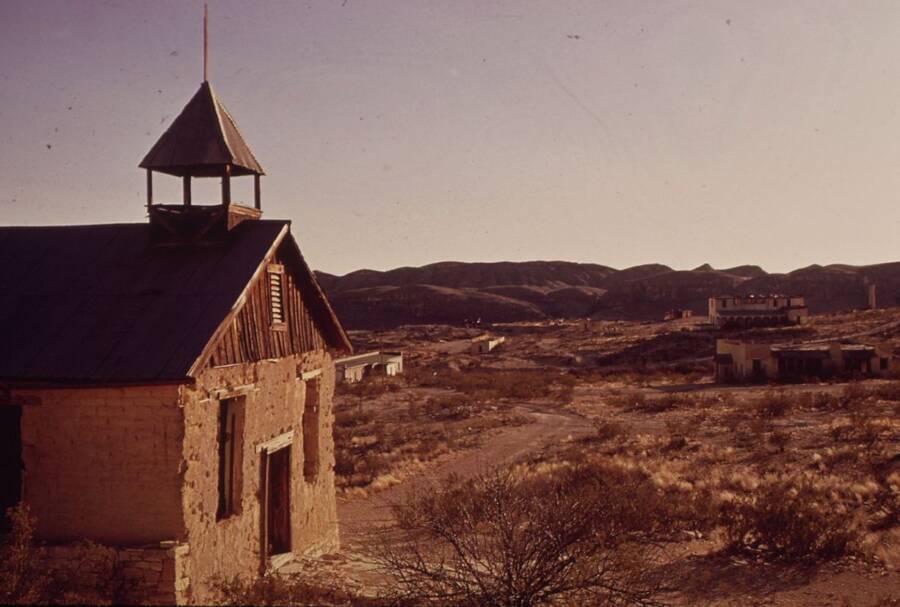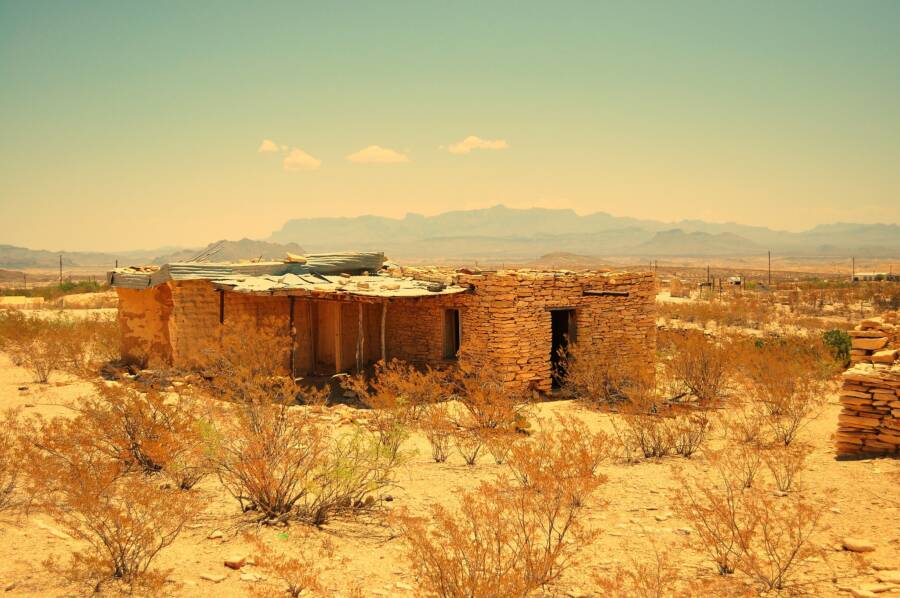Terlingua, The Famous Texas Ghost Town

National Archives and Records AdministrationAn old church in Terlingua, Texas.
The story of Terlingua, Texas, begins with quicksilver — or, as we call it today, mercury.
In the 1880s, quicksilver was discovered at Terlingua. In fact, Native Americans had known about the substance called cinnabar for years. They used its red pigment for pictographs. But by the turn of the century, several mining operations had been set up to extract mercury from the earth.
At that point, Terlingua started to grow around the mercury mines. At first, the town consisted of just a few ramshackle sheds and shelters, but Terlingua was soon home to the largest mercury producer in the United States.

Jack Parrott/FlickrThe mercury mines of Terlingua made the town rich, but they began to decline in the 1930s.
When Terlingua “moved” to be closer to another mine, it quickly grew into a bona fide mining town with a store, doctor, post office, hotel, school, and theater. Some 1,000 people lived there, though the town was segregated into a section for Mexican miners and a section for white Americans, according to the Texas State Historical Association.
But though the discovery of a new, rich vein of mercury serendipitously coincided with the outbreak of World War I, Terlingua’s good fortunes didn’t last. Mercury production started to decline in the 1930s, and residents began to drift away. By the 1940s, just 300 people remained in the town.
Today, however, Terlingua is one of the most popular ghost towns in Texas. And though its story began with quicksilver, it ended with chili — in 1967, Terlingua was named the “Chili Capital of the World.”





